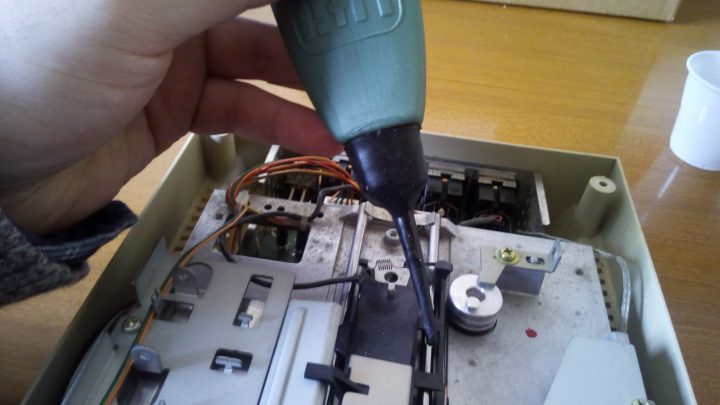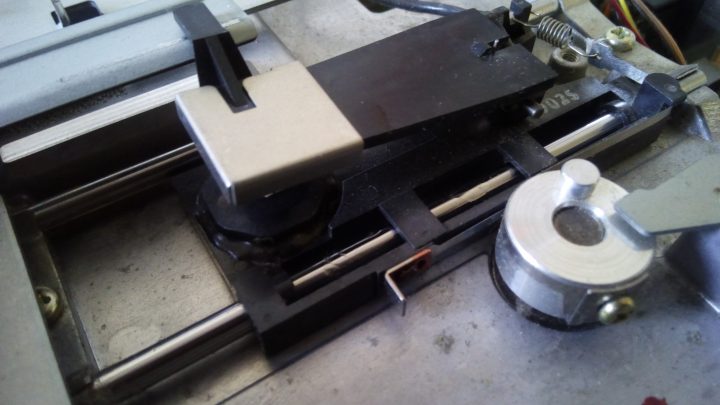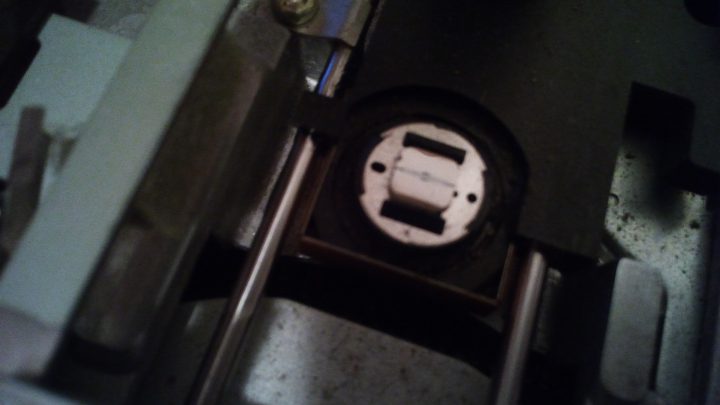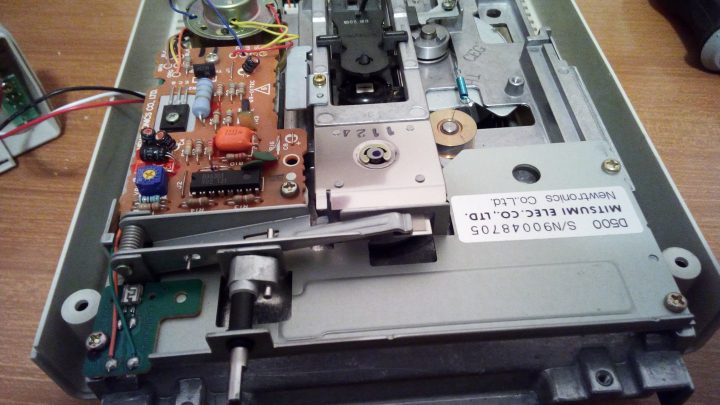Despite the design flaws it was plagued with, the Commodore 1541 has always been regarded as the standard device for disk data storage on Commodore 64 computers.
Note: this article is an English translation of my previous Italian article.
The 1541 is a smart floppy disk unit. It has its own processor and memory. It may be actually seen as a computer designed to perform a particular task rather than a common I/O device.
This design allows the unit to perform some tasks even without the assistance of the main computer. The unit can execute DOS commands by itself: the computer should only send the command to be executed. Furthermore, the disk operating system (CBM DOS) can be found inside the unit (on a ROM), so no need to load the OS in the Commodore 64 main RAM.
However, this device suffers from very low data transfer speed (but there are remedies) and it is very complex, leading to difficult troubleshooting and repair procedures.
On the first 1541 model, the power supply is inside the unit. This avoids an unconfortable external power pack, but the heat of the internal power supply goes on the 1541 electronic board and mechanics.
- Electronic board heating may lead to ICs damage;
- Heating of the mechanics may lead to alignment issues.
So, when using a Commodore 1541, it is advisable not to turn it on and off too often, not to leave it on when unused, don’t obstruct the vents. Some periodic maintenance is also mandatory.
Always remember to turn off your disk drive and to unplug it from the AC line before opening it!
How to clean and lubricate drive mechanics. It is advisable to open the 1541 from time to time in order to clean the rails where the head assembly moves. Then, lubrication with a very small quantity of light oil is in order.
You should move the head along the rails, backwards and forwards for a few times, while cleaning and while lubricating as well. This way, dirt will come out from the head assembly holes more easily. Please note that cleaning is very important. Dirty rails may cause problems very similar to alignement issues (this is very likely to happen on ALPS mechanics).


Head cleaning. This is another important operation. When using old floppy disks, this task should be performed more often. The dirt you see on the head is not dirt actually, it is the magnetic material floppy disks are made with. This “dirt” doesn’t allow the head to read disks properly. At the end, the head may not be able to read anything.

For head cleaning, you should lift the pad which is over the head very gently, then you should clean the head with a cotton swab, containing a small quantity of alchol (isopropyl alchol works better).
Usually, you will find brown residues on the cotton. After head cleaning, let it dry before turning the drive on again!
Initializing. Sometimes the drive is not able to work properly, even if it is in perfect working order. Even if you turn it off and then back on, the problem may still be there. Due to a design flaw, sometimes the head may be “lost”. To fix the “lost head” syndrome, you should issue the following command:
OPEN 15,8,15:PRINT#15,”I:”:CLOSE 15
If the drive is not faulty, it will be back in working order.
If all the above procedures don’t get your drive working properly, some other issues may be around.
Power supply, electronics or mechanics problem?
Commodore 1541 troubleshooting is rather complex, as we have a computer with a mechanics as well.
If you have a working 1541 and you are going to repair a second one, then it is simpler because you have a reference.
It is possible to take a measure of the voltages on the 1541 board. Be sure that both +5V CC and +12V CC are present and correct. A failure of the transformer is very rare. Voltage regulators and rectifiers on the board are more likely to fail.
If one voltage line goes to 0 V, symptoms are easy to recognize. If the +5V line fails, when you turn on the unit, the motor will keep spinning, the read led will stay on but the power led will stay off. If the 12+ V line is missing, the unit will perform its “boot” properly, but the motor will not turn on.
The board may fail in several ways. It has many ICs (first series 1541s): the CPU (a 6502 chip), two VIAs, one controller, two ROMs (firmware and CBM DOS), a RAM chip and several TTL chip. The CBM DOS ROM chip seems to have the highest failure rate. CPU and VIAs follow. On my personal experience, the 7406 chip has a certain tendency to fail as well. On older units, many chips are socketed, so repairs are easier.
Usually, when turning on the unit, if both leds stay on and motor runs continuosly, or one led blinks, usually the problem is electronics related.
If the unit turns on properly but it is not capable of reading any floppy, even with cleaning performed, the problem may be in the electronics but also in the mechanics.
If the unit has got some reading problems but it is able to read some disks, then the problem is by a 99% rate in the mechanics.
Checking rotation speed. When data reading/writing is performed, the floppy disk should rotate at a constant speed. On first series 1541, and on 1541-II with Newtronics mechanics, a small trimmer allows for this regulation. You can find it on the small controller board that is secured to the mechanics.

On some first series 1541s, you may find a stroboscopic pattern which allows you to regulate the disk rotation speed. You may also use an utility as well.
To get the speed right, belt replacement may be also needed. On the worst cases, bearings of the floppy carrier assembly may need replacement.
Disk rotation speed should be very exact. No more than a half turn error should be allowed.
Alignment. For various reasons, the read/write head may get misaligned over time. Many load errors may be due to this. At a certain point, it may become impossible to load anything.
Even without specifically designed utilities, an incorrect alignment is easy to spot. Get a good known commercial floppy with a long program inside. Load this program (with the KERNAL, no fast loaders) and keep looking at the read/write led. If it stays always on, then alignment may be OK. Instead, if it blinks from time to time, alignment is very likely to be bad.
On part 2, we will have a look at the alignment procedure.
Hi,
I have a strange issue with a 1541C which was fully working some days ago. At power up I have the green light but NO red light. The motor spins for a few seconds and the head mechs aligns but I cannot get any directory of a working disk to be loaded. The C64 I am using is fine as tested with another working drive.
I have read a lot of troubleshooting guides but my case scenario is not there. A green light with NO red light at all and a motor spins + head movement what this can be?
Hello, I am a bit unsure about what the problem may be. Since the red light doesn’t come on, I’d suspect some issue dealing with the power supply. Voltages are ok? I would check them if you haven’t done already.
If voltages are OK, then I think there’s some issue with the electronics board, maybe a bad controller IC or VIA. But it’s very hard to judge from here. Anyway, is it a 251854 short board?
On my commodore 1541 floppy disk drive the slot door where you close the disk is loose, any ideas?
Hello! Could you show me a picture about the issue? It can be a spring that should be replaced, but it may be easily another issue. Regards 🙂
If you like I released a software to better move the head and check the speed.
https://github.com/Zibri/C64-1541-Speed-Test